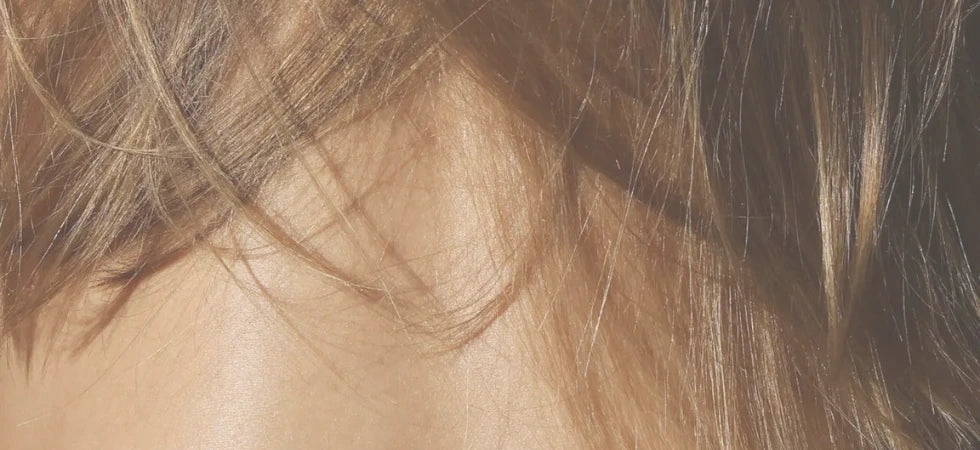Yes, it is possible to regrow hair after alopecia, but it all depends on the cause and type of alopecia. Some forms, such as androgenetic alopecia, require specific treatments, while alopecia due to stress or deficiencies can be reversible with better stress management and appropriate nutritional intake.
What are the chances of hair regrowth after alopecia?
Factors that influence hair regrowth
The chances of hair regrowth after alopecia depend primarily on the cause of hair loss, the condition of the hair follicles, and the treatment undertaken. Here are the main factors influencing regrowth:
Age: The older a person gets, the more difficult hair regrowth becomes. This is due to a decrease in the activity of hair follicles, which tend to weaken with age, as well as a general slowing of metabolism. In younger people, the follicles are still very active and able to regenerate hair more effectively. Young adults or teenagers are therefore often better able to respond positively to regrowth treatments than older people, whose follicles have already suffered the effects of aging.
Types of alopecia: Some forms of alopecia, such as telogen effluvium or alopecia areata, have a good chance of resolving on their own, as they are often temporary and linked to external factors like stress, hormonal changes, or immune disorders. These forms can usually be treated with simpler solutions, allowing hair to grow back after a while. In contrast, other more serious forms, such as scarring alopecia, result in permanent hair loss. The scars destroy the hair follicles, making regrowth impossible, even with medical treatments.
Hair follicle condition: If the hair follicles are still healthy and undamaged, hair can regrow. However, if the stem cells are destroyed due to disease, injury, or inflammatory processes, regrowth will be impossible. The presence of healthy follicles is therefore crucial for any attempt at hair regeneration. In cases of androgenetic alopecia, even though the follicles shrink and produce finer hairs, they are not completely destroyed and can be stimulated by treatments such as minoxidil or finasteride.

Cases where regrowth is possible or impossible
In some cases, hair can grow back naturally, or with the help of treatment. Here are some examples where regrowth is possible:
Telogen effluvium:
Telogen effluvium is a form of reversible hair loss caused by stress, hormonal changes, infections, or nutritional deficiencies. Although this hair loss is often sudden and significant, it is temporary, and the hair usually grows back once the cause is addressed.
Alopecia caused by medical treatments:
People who have undergone chemotherapy for cancer, for example, may temporarily lose their hair. After the treatment ends, hair usually grows back, although the texture or color of the hair may sometimes change.
Alopecia areata:
This form of autoimmune alopecia manifests as patches of hair loss on the scalp. It may resolve spontaneously or after appropriate treatment, allowing hair regrowth.
In some cases, regrowth is limited or completely impossible:
Scarring alopecia: Scarring alopecia is irreversible. It occurs when hair follicles are destroyed and replaced by scar tissue. Causes can include autoimmune diseases such as lupus or serious infections. Once the follicles are destroyed, hair regrowth is impossible.
Advanced androgenetic alopecia: This form of alopecia is linked to a genetic predisposition and the hormone dihydrotestosterone (DHT), which progressively reduces the size of hair follicles, rendering them unable to produce new hair. In men, androgenetic alopecia typically manifests as baldness at the crown, while in women, it results in diffuse thinning of the hair all over the head. This form of baldness can sometimes be stabilized, but complete regrowth is rarely achieved once the loss is advanced.
Physical trauma or burns: Deep scarring from trauma, burns, or infections on the scalp can permanently damage hair follicles. In these cases, hair regeneration is often impossible, although hair transplant surgery may offer an alternative.
Understanding Alopecia and Its Manifestations

The different forms of alopecia
Alopecia is not a single phenomenon and presents many variations depending on its causes. Here are the main forms:
Androgenetic alopecia:
This is the most common form of hair loss, often called "baldness." It generally appears in men, but is also increasingly common in women, particularly after menopause. It is caused by a combination of genetic predisposition and the action of dihydrotestosterone (DHT), a hormone derived from testosterone. This hormone leads to the miniaturization of hair follicles, thus reducing their ability to produce new hair.
Scarring alopecia:
This form of alopecia is characterized by the permanent destruction of hair follicles due to inflammatory or autoimmune diseases. Causes can include lupus, lichen planopilaris, or scalp infections. Once follicles are destroyed, they cannot regenerate, making hair regrowth impossible in the affected areas.
Traction alopecia:
Caused by tight hairstyles, such as braids or ponytails, traction alopecia is common, especially among people who frequently wear this type of hairstyle. If the traction on the follicles is constant, it can damage the hair roots and lead to permanent hair loss. However, if the mechanical stress is stopped in time, regrowth may occur.
Preventing and Limiting the Effects of Alopecia

Adopting good practices on a daily basis
Preventing alopecia begins with adopting good hair care habits and proactively taking care of your hair. Here are a few tips:
Avoid harsh chemicals: Hair dyes, perms, and other chemical treatments can weaken hair and scalp. Limit their use to protect your hair follicles.
Regularly massage the scalp: A gentle massage helps stimulate blood circulation and ensures better nutrient delivery to the hair follicles.
Change your hairstyle frequently: Avoid keeping tight hairstyles for long periods, such as braids or ponytails, to prevent traction alopecia.
Improving your lifestyle to strengthen your hair
Good hair health also depends on a suitable lifestyle:
Balanced nutrition: Consuming foods rich in vitamins (especially A, C, E and those of the B group), iron, zinc and essential fatty acids is essential for strengthening hair.
Stress management: Stress is a major factor in the onset of telogen effluvium, a temporary form of hair loss. Adopting relaxation techniques such as meditation, yoga, or breathing exercises can help minimize its impact.
Regular physical exercise: Exercise stimulates blood circulation and helps maintain healthy hair follicles.
Treatments to Stimulate Hair Regrowth
Medical treatments: personalized support
Medical treatments to stimulate hair regrowth vary depending on the type and severity of alopecia. They aim to slow hair loss and promote growth, according to each patient's needs.
Minoxidil: This topical treatment is one of the most commonly used for treating baldness, particularly androgenetic alopecia. Minoxidil works by improving blood flow to the scalp and increasing the size of hair follicles. By allowing the follicles to receive more nutrients, it stimulates the production of new hair. When applied daily, results can be seen after a few months, although they are not immediate. However, treatment must be continued to maintain the results.
Finasteride: Finasteride is an oral medication that blocks the 5-alpha-reductase enzyme, responsible for converting testosterone into dihydrotestosterone (DHT), a hormone involved in the miniaturization of hair follicles. By inhibiting this enzyme, finasteride slows hair loss and can encourage regrowth, particularly in men with androgenetic alopecia. Possible side effects include decreased libido or sexual function, hence the importance of medical supervision.
Laser therapy: Low-level laser light therapy is a non-invasive method that stimulates hair follicles by improving blood circulation and delivering more oxygen and nutrients. Used in the form of a helmet or comb, this method promotes follicle regeneration, but results may be more limited in cases of advanced baldness.
Natural remedies to promote regrowth
In addition to medical treatments, some natural remedies can also stimulate hair regeneration.
Essential oils: Oils like rosemary, peppermint, or lavender are known for their stimulating effects on scalp blood circulation, which helps nourish hair follicles and improve their function. Applying these oils as a scalp massage can promote hair growth.
Dietary supplements: Vitamins and minerals such as biotin , iron , zinc , and vitamin D are often recommended to nourish hair from within and promote growth. These nutrients play a vital role in keratin production and scalp health.
Hair masks: Applying natural oils such as castor oil , argan oil , or coconut oil deeply nourishes the hair and strengthens the hair follicles. These masks can be applied regularly to maintain healthy hair and stimulate growth.

Hair surgery: a lasting solution?
Hair transplant surgery is an option for people suffering from advanced baldness. It involves taking healthy hair follicles, usually from the back of the head, and implanting them in the balding areas.
Availability of donor follicles: For a successful transplant, it is crucial to have a sufficient number of healthy hair follicles in the donor area. If this area is insufficient, the result may not be optimal. A preliminary evaluation is therefore necessary.
High cost: Hair transplantation is an expensive procedure, and prices vary depending on the technique (FUE, FUT) and the number of grafts required. Furthermore, rigorous medical follow-up is necessary after the procedure to ensure a good result and avoid any complications.
In short, medical, natural, and surgical treatments offer various solutions for combating alopecia. The choice of treatment depends on each individual situation and often requires medical advice to determine the most appropriate method.
Testimonials and Experiences of People Who Have Overcome Alopecia
Many people have regained their hair after following appropriate treatment or changing their habits. Here are some inspiring stories:
Claire, 40: After significant hair loss related to pregnancy, Claire adopted a more balanced diet and used minoxidil-based treatments. Her hair grew back within a few months.
Marc, 50 years old: Suffering from androgenetic alopecia, Marc opted for a hair transplant. Today, he enjoys a full and natural head of hair.
Sofia, 30: A victim of traction alopecia after wearing tight braids for several years, Sofia changed her hairstyling habits and saw her hair grow back naturally after a few months.
Key Takeaways About Hair Regrowth After Alopecia
The possibility of regaining hair after alopecia depends on many factors: the type of alopecia, the condition of the hair follicles, age, and the treatments received. Some forms of alopecia, such as telogen effluvium, can be reversible, while others, such as scarring alopecia, result in permanent hair loss. However, medical and natural treatments can help stimulate regrowth, and hair transplantation is an option for advanced cases of baldness.
FAQ
Does hair grow back after alopecia?
Yes, depending on the type of alopecia, regrowth can be partial or complete. In cases like telogen effluvium, which is usually linked to stress, hormonal changes, or illness, hair growth is often temporary, and the hair naturally regrows once the underlying cause is treated. Similarly, in the case of alopecia areata, an autoimmune disease that causes patchy hair loss, hair can regrow after appropriate treatment. However, for other forms of alopecia, such as androgenetic alopecia, regrowth can be more difficult or may require medical treatment to stimulate it.
What are the best treatments for hair regrowth?
The most common treatments to promote hair regrowth include minoxidil, finasteride, and laser therapy. Minoxidil is applied topically to stimulate blood flow to the scalp, which promotes hair growth. Finasteride, taken orally, blocks the production of DHT, a hormone responsible for the miniaturization of hair follicles. Laser therapy uses light to stimulate hair follicles and promote the growth of new hair. Each treatment has specific benefits depending on the type of alopecia, and medical follow-up is essential for guidance and optimal results.
Is alopecia reversible?
It depends on the type of alopecia. Reversible forms, such as telogen effluvium, which often results from temporary factors like stress, pregnancy, or hormonal imbalances, can resolve on their own after the underlying cause is addressed. In these cases, hair usually regrows naturally within a few months. On the other hand, other forms of alopecia, such as androgenetic alopecia, are more difficult to treat and require long-term management to slow hair loss and stimulate regrowth, although results vary from person to person.


